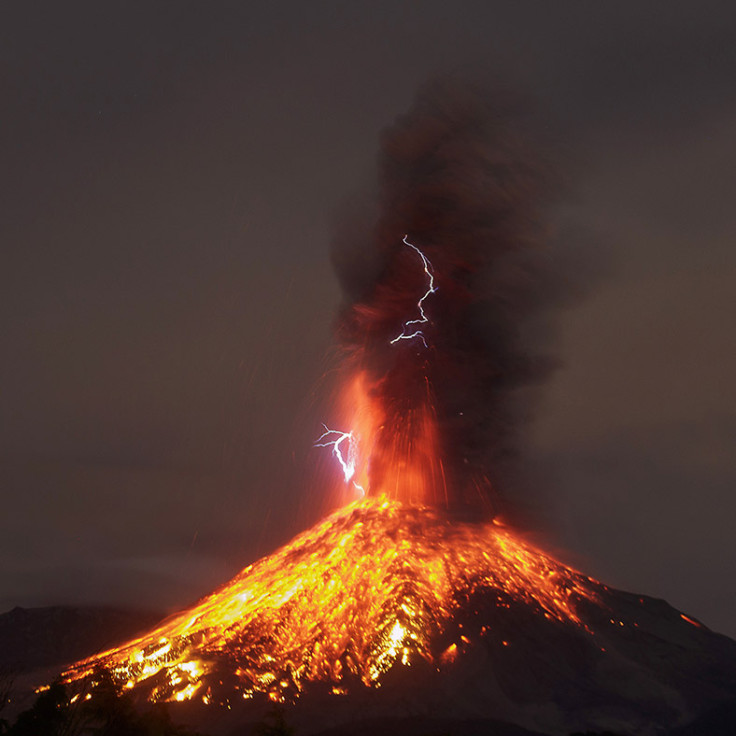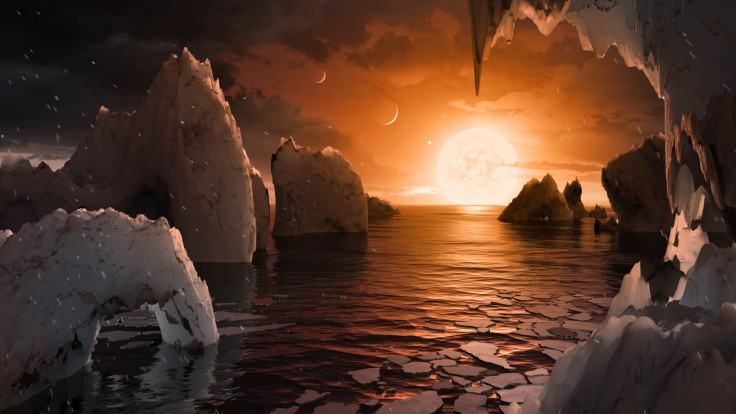Volcanoes on exoplanets make potential for alien life even higher than we thought
Hydrogen spewed from volcanoes could help warm a planet in zones considered too cold for life to exist.
We live in an exciting time of discoveries. For the first time in human history, we have the technology to find planets orbiting alien suns. More than 3,000 such exoplanets have already been discovered, and some of those may even be similar to our own planet.
To find life on these worlds, first we need to figure out where planets can orbit in order to have similar environments to our own, nice and warm (of course also allowing for a winter snowstorm once in a while).
Close to a star, it is very hot and oceans would boil off. Far from a star, it gets so cold that an Earth-like planet would become an icy wasteland. The distance where it is comfortably warm depends on the size of the star – just like when sitting around a campfire. For small stars like the recently announced Trappist-1 system, the temperate zone is very close to the star, while for a bigger star like our Sun it is further out – in our solar system, it is roughly the distance from just beyond Venus to just beyond Mars.
This warm 'Goldilocks' zone around a star is called the habitable zone, where we could find life if it exists. It's possible that life could also exist on frozen planets or moons outside the habitable zone, but such life would be buried under layers of ice, which would make it really hard to spot. (Scientists are planning missions to the icy moons in our own solar system that will drill through the ice layer to look for life).

In research published this month in the Astrophysical Journal Letters, my colleague Ramses Ramirez and I showed that volcanoes can change where that line between warm planet and frozen wasteland is using atmospheric models.
Volcanoes also spew out hydrogen into a planet's air, which is an efficient way of warming a planet – and sustainable as long as the volcanoes function. This means that more planets could be habitable than astronomers have previously thought, adding many more planets to our 'search here for life' target list. Where we thought you would only find icy wastelands, planets could be nice and warm – as long as volcanoes are in view.
This research puts planets scientists previously thought too cold to support detectable life back into play. Recently, Belgium astronomers reported finding seven Earth-like planets around the star Trappist-1, with three of these planets in the habitable zone. The outermost planet, that was previously considered too cold for life, may lie in the new volcanic habitable zone we've identified, adding a fourth planet to Trappist-1's habitable zone (though the planet's orbit is still uncertain so we can't yet be sure).

To explore planets orbiting alien suns, we collect the starlight that filters through their atmosphere with our telescopes and analyse what energies (or certain colors) are missing in the incoming light. These absorption features tell us what chemicals the light interacted with on its way to us – a bit like passport stamps tell which countries you visited before arriving somewhere.
Absorption features are unique and thus we can read the chemical makeup of an alien world's atmosphere by collecting its light only. If a planet is warm enough – thanks to atmospheric warming – you could have life on the surface, generating a slew of detectable light signatures.
Atmospheric biosignatures, such as methane in combination with ozone – indicating life – are on the search list for the James Webb Space Telescope, launching in 2018, and the European Extremely Large Telescope being built in Chile, to begin operation in 2024.

As a very light gas, hydrogen also 'puffs up' planetary atmospheres, which could also help us detect signs of life. Hydrogen increases the detectable signal, making it easier to spot the chemical makeup of the atmosphere as compared to similar planets without hydrogen. Volcanoes adding hydrogen to the air of an exoplanet is therefore a good thing for astronomers observing the atmosphere of another world with a telescope.
While our ancestors could only look up at the stars and wonder whether we are alone in the universe, we have already found potentially habitable worlds. What would finding life mean to our society? What influence would it have? With exotic adventure travel destinations nearby, I'd wager that we would be quite motivated to find a way to undertake interstellar travel.
One thing is certain: we are living in one of the most exciting times in human history. We have already spotted possible habitable worlds in the night sky and are now building the telescopes to find out whether we are alone in the universe. I hope we are not.
Lisa Kaltenegger is Associate Professor of Astronomy at Cornell University and Director of the Carl Sagan Institute
© Copyright IBTimes 2025. All rights reserved.





















